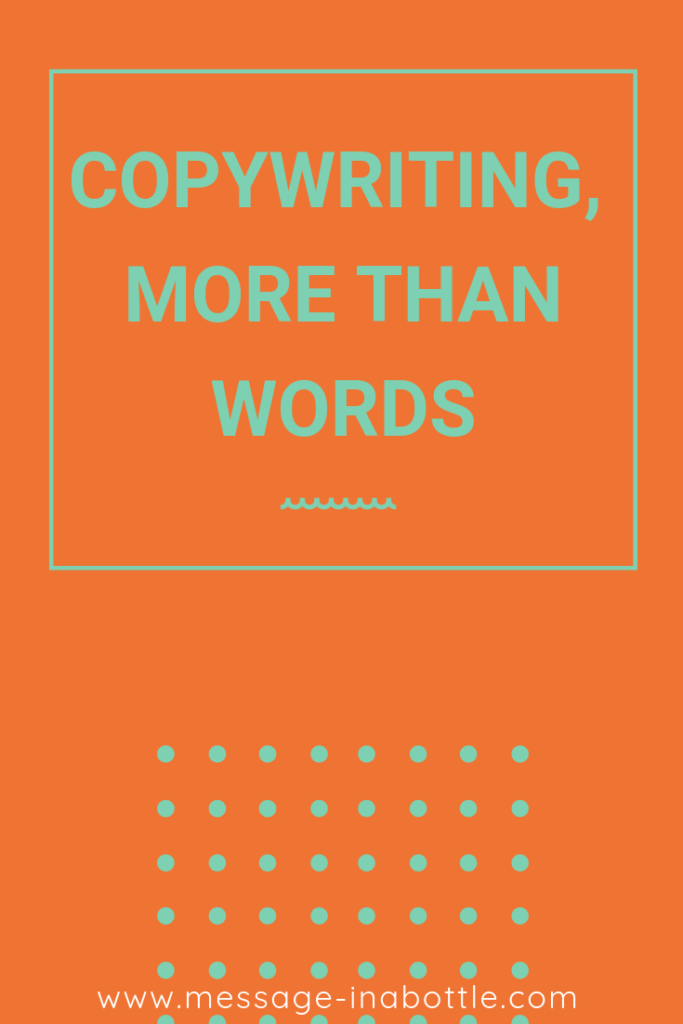A copywriting job involves several stages. In the end, writing is a small part of what copywriting is.
After more than a year of activity, I realized that if we are talking about storytelling and copywriting, not many people know what this activity really means.
Today, it will change 😊. I will explain to you how I proceed. The activity of copywriter will have (almost) no more secrets for you.
A. Meeting and talk
Yes, everything starts with a good talk. I take time to meet my clients. I need to clearly understand their project, their business, their goals and sometimes, their craziest dreams. This first meeting can last 1h, 2h or more, depending on the type of writing.
This is a very important moment because it allows me to determine different aspects:
- if I am the right person to do this job
- how does the company want to communicate
- what are the values of my clients
- their tastes
- their deadlines
- their goals
- who is the recipient of the message
- where is the recipient of the message and therefore in what language I will write.
This step is essential. To write correctly, I have to put myself in the place of my client, know his company and, at the same time, put myself in the place of his customers. I have to take in all the information I receive.
Copywriting is an activity where psychology is central. Without this quality, it’s almost impossible to write a text that fits perfectly to the identity of my clients.
B. Research
Despite my experience of writing in different fields, I obviously do not know all the fields of activity. So, the second step is devoted to research.
I put on my raincoat, take my magnifying glass 🔎, my little notebook and I am in perfect conditions to investigate like Sherlock Holmes. In reality, I take my laptop and go on Google. But it is true that I still have my little notebook close to me. Anyway.
My research focuses on:
- the company: I look at its reputation, what people said about it and I take here and there information that may be useful to me; I get to know it.
- the field of activity: it’s the same as for the company; I get to know the environment in which my client evolves, I also learn about the news of the field.
- the competition: knowing what others do, how they communicate gives me the opportunity to gauge the level where the company is. I often extend this research to other countries, even if my text is intended rather for regional personas. It’s always interesting to compare competitors located elsewhere. Culturally, communication can be very different, which is rewarding and inspiring.
- market analysis: this is the logical consequence of the previous point. Frequently, it’s by studying this part that I find my angle of attack for the writing. This analysis allows me to know concretely which positioning has been adopted.
Sometimes, I call people from the same field to ask questions and get another professional point of view. It’s obvious that I take this information discreetly and without revealing for whom I work or what is the current project. In my job, confidentiality is just the basis. Should I have to mention it?
C. SEO
Once I feel completely comfortable in my client’s field, it’s time to move on to the technique. It’s time to study which keywords are essential to use. I am looking for those who will have to be integrated in my text. Moreover, it’s in principle at that moment, that I begin to think about the structure of my writing.
I do not go back to the details of SEO. I have already treated in one of my previous articles that I invite you to consult if the subject interests you: SEO: the basics for beginners.
D. Copywriting
Finally, here is the moment of pure happiness: COPYWRITING. At this point, I often feel like a boiling pan ready to overflow. My brain is completely impregnated with the subject and filled with words and ideas. I am ready.
Besides, sometimes my little fingers do not type fast enough on my keyboard so my thoughts fuse.
Thanks to all the preparation made upstream, I am able to write a text that will meet the expectations of my client. This process, which can seem very long, is essential for having a fluid writing.
Removing steps or botching them to be faster will not give a text as relevant, impactful and fitted to my client’s identity. In short, it’s equivalent to removing all the super powers of copywriting.
On the other hand, these different steps make it possible to find the right tone so that the readers of the text do not feel that it was written for a specific purpose: selling them something or calling them to action.
This is the subtlety and beauty of copywriting: writing with specific goals without these same goals being visible to readers.
E. Proofreading
After sending my text proposal to my client, he has the opportunity to come back to me to ask me for changes. These changes may include a sentence phrase, technical terms or a discussion around several propositions, for example.
I call this the stage of customization. The text is refined so that my client feels definitely convinced by him. As if he wrote it himself.
That’s the magic of copywriting! Moreover, when I had to define the writing on my website, this is what I wanted to express: “Our pen, or rather our keyboard, will be an extension of your brain.” My job is to guess what my client would like to write on his own to achieve his goals.
Only then, my work is done.
May the power of your ideas
be found in your words!

par Delphine Berclaz
